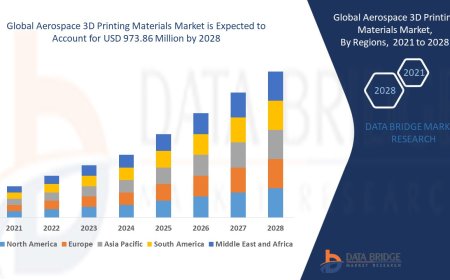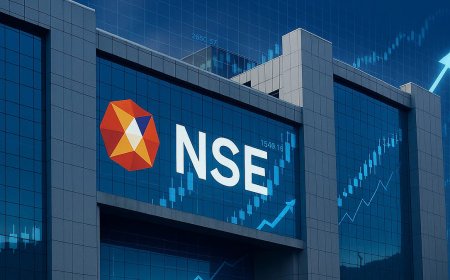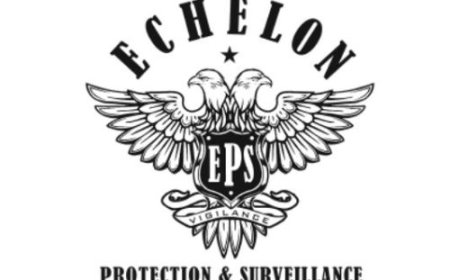How to Integrate Rollups as a Service into Your Web3 Infrastructure?
As blockchain adoption accelerates, businesses that successfully integrate Rollups into their Web3 stack will be well-positioned to capitalize on new opportunities, deliver superior user experiences, and stay ahead in the competitive decentralized economy.

The blockchain ecosystem continues to evolve rapidly, and scalability remains one of the most critical challenges for decentralized applications and platforms. As adoption grows, the demand for faster transaction throughput and lower fees has led to the development of various Layer 2 solutions. Among these, Rollups have emerged as a promising technology to scale blockchains efficiently. In particular, the concept of Rollups as a Service (RaaS) is gaining traction, enabling projects to leverage advanced scalability without building everything from scratch. This article explores what Rollups as a Service entails, why it matters for your Web3 infrastructure, and the step-by-step approach to integrating it seamlessly into your business ecosystem.
Understanding Rollups and Their Importance in Web3
Before diving into the integration process, it is crucial to understand what Rollups are and why they are essential for Web3 projects. Rollups are Layer 2 scaling solutions designed to increase transaction throughput and reduce gas fees by bundling or rolling up multiple transactions off-chain and submitting them as a single batch on the main blockchain. This approach allows the main chain (Layer 1) to handle fewer transactions, easing congestion and improving efficiency.
There are primarily two types of Rollups: Optimistic Rollups and Zero-Knowledge (ZK) Rollups. Optimistic Rollups assume transactions are valid by default and use a fraud-proof system to challenge incorrect ones. ZK Rollups generate cryptographic proofs to verify transaction validity instantly, offering enhanced security and speed. Both types contribute to scalability but differ in trade-offs related to security, speed, and complexity.
Rollups have become indispensable as Ethereum and other blockchains face significant scalability bottlenecks. For businesses building Web3 applications, adopting Rollups means better user experience due to faster transactions, lower costs, and more scalable infrastructure critical factors for mainstream adoption and sustainable growth.
What is Rollups as a Service (RaaS)?
Rollups as a Service takes the Rollup concept a step further by offering scalable, managed Rollup solutions as a product or service that developers and businesses can integrate into their existing blockchain infrastructure without building the Rollup technology from scratch. Think of it as a plug-and-play solution where you leverage a specialized providers Rollup infrastructure, security, and maintenance capabilities.
By using RaaS, companies can accelerate development timelines, reduce operational overhead, and focus on building unique product features instead of grappling with complex scalability protocols. This model also democratizes access to Rollup technology, making it feasible for smaller teams or startups to implement high-performance Layer 2 scaling solutions that were once the domain of large organizations with deep technical expertise.
Why Your Web3 Business Needs Rollups as a Service
As blockchain-based businesses grow, user demand intensifies, often leading to network congestion, slow confirmation times, and high fees, which can deter users and stifle growth. Integrating Rollups as a Service addresses these pain points head-on. For businesses, the benefits extend beyond technical improvements. Rollups as a Service enable cost-effective scaling, improved security models via Layer 1 validation, and better user retention due to enhanced performance.
Moreover, as regulatory landscapes evolve, having a reliable, auditable Layer 2 solution helps maintain compliance and transparency. With RaaS, businesses gain a competitive edge by delivering seamless decentralized experiences that rival centralized counterparts in speed and cost.
Preparing Your Web3 Infrastructure for Rollups Integration
Successfully integrating Rollups as a Service begins with a thorough assessment of your existing Web3 infrastructure. First, you need to evaluate the current blockchain protocol your application is built on, typically Ethereum or other EVM-compatible chains, and analyze the transaction patterns, volume, and user behavior. Understanding these metrics helps determine which type of Rollup solutionOptimistic or ZKbest fits your business needs.
Next, review your smart contract architecture. Rollups often require adaptations in smart contract deployment to support Layer 2 interactions. For example, some contracts may need to be redeployed or modified to operate within the Rollup environment. Additionally, you must ensure your decentralized application (dApp) frontend can communicate effectively with the Rollup network, requiring updates to wallet integrations, transaction handling, and user notifications.
Another critical step involves ensuring that your data availability and security policies align with Rollup architecture. Since Rollups process transactions off-chain, businesses need to ensure that data is accessible and verifiable to maintain trustlessness and security guarantees.
Selecting the Right Rollups as a Service Provider
Choosing the appropriate RaaS provider is a strategic decision that impacts the scalability, security, and future roadmap of your project. Factors to consider include the providers reputation, security audits, uptime guarantees, and compatibility with your existing stack.
Some RaaS providers specialize in Optimistic Rollups, while others focus on ZK Rollups, so aligning the providers technology with your business goals and user needs is vital. You should also evaluate the providers documentation, developer support, and integration tools, as these significantly affect the ease and speed of deployment.
Additionally, consider the cost model of the service. Since Rollups reduce transaction fees, you want to ensure the providers pricing aligns with your budget and growth projections. Transparent SLAs (Service Level Agreements) and clear governance structures further enhance confidence in the providers reliability.
Integration Workflow: Step-by-Step Approach
Once your infrastructure is ready and you have selected a suitable RaaS provider, the actual integration process begins. The first stage involves establishing secure connections between your existing Layer 1 smart contracts and the Rollup network. This often means deploying proxy contracts or bridge contracts that facilitate asset and data transfers between the mainnet and Layer 2.
The next stage focuses on migrating or deploying new smart contracts on the Rollup chain. Depending on your applications architecture, you may choose to mirror contracts on Layer 2 or redesign them to optimize for Rollup-specific execution environments. This process typically requires careful testing and auditing to ensure contract behavior remains consistent and secure.
Parallel to contract deployment, your dApps frontend needs to be updated to interact seamlessly with the Rollup environment. This includes configuring wallet providers to support Layer 2 transactions, implementing fallback mechanisms to handle Layer 1 interactions when needed, and enhancing user interfaces to display transaction status transparently.
After the technical setup, extensive testing is crucial. Conduct both unit and integration tests simulating real user scenarios to verify transaction integrity, confirmation speeds, and failure recovery. Performance benchmarks help identify bottlenecks, enabling iterative improvements before the official rollout.
Finally, once testing is satisfactory, plan a phased rollout strategy to onboard users gradually, providing adequate support and education to ease adoption. Continuous monitoring of network health and user feedback ensures smooth operation and quick resolution of any issues.
Challenges to Anticipate During Integration
While Rollups as a Service offers many benefits, integration is not without challenges. One common hurdle is the complexity of bridging assets and data securely between Layer 1 and Layer 2. Maintaining synchronization and consistency requires robust bridging mechanisms that are resistant to attacks and failures.
Another challenge lies in smart contract compatibility. Not all Layer 1 contracts can be migrated seamlessly; some logic may require refactoring to function correctly in Rollup environments. This process demands deep technical expertise and may impact development timelines.
User experience is also a consideration. Users unfamiliar with Layer 2 concepts may find managing multiple wallets or chains confusing. Your dApp must provide intuitive onboarding and clear communication to mitigate this friction.
Moreover, monitoring and debugging Layer 2 transactions can be more complex due to off-chain processing. Investing in advanced monitoring tools and logging infrastructure helps maintain visibility into the systems health.
Post-Integration Best Practices
After successful integration, its vital to adopt best practices to maximize the benefits of Rollups as a Service. Regularly update your contracts and frontend components to stay compatible with provider upgrades and security patches. Continuously engage with your user base to gather feedback and educate them about the advantages of Layer 2 transactions.
Maintain close collaboration with your RaaS provider to access technical support and participate in ecosystem developments. Track performance metrics and cost savings to evaluate ROI and inform future scaling decisions.
Security audits and penetration testing should be performed periodically to identify and remediate vulnerabilities that could arise from evolving attack vectors targeting Layer 2 solutions.
Finally, keep an eye on emerging Rollup technologies and competitors. The space is evolving rapidly, and being agile will allow your business to maintain a competitive edge.
Conclusion
Integrating Rollups as a Service into your Web3 infrastructure represents a strategic step towards overcoming blockchain scalability challenges and enhancing user experience. By leveraging managed Rollup solutions, businesses can achieve faster transaction speeds, reduced costs, and improved security without the burden of building and maintaining complex Layer 2 protocols internally.
This integration requires careful planning, from assessing current infrastructure and selecting the right provider to deploying smart contracts and updating user-facing applications. Despite some challenges, the long-term benefits of Rollups as a Service make it an attractive proposition for Web3 projects aiming for scalability and sustainability.



































